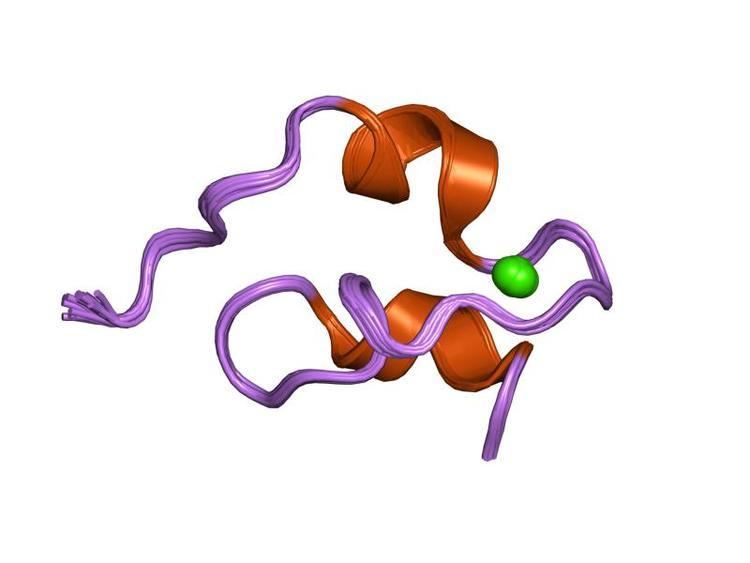Symbol Notch InterPro IPR000800 PROSITE PS50258 | Pfam PF00066 SMART SM00004 Pfam structures | |
 | ||
Notch (DSL) proteins are a family of transmembrane proteins with repeated extracellular EGF domains and the notch (or DSL) domains. These proteins are involved in lateral inhibition in embryogenesis.
Contents
The Notch signaling network is an evolutionarily conserved intercellular signaling pathway that regulates interactions between physically adjacent cells. In Drosophila, Notch interaction with its cell-bound ligands (delta, serrate) establishes an intercellular signaling pathway that plays a key role in development. This same pathway operates to mediate binary cell fate decisions in C. elegans development. Members of this Type 1 transmembrane protein family share structural characteristics including an extracellular domain consisting of multiple epidermal growth factor-like (EGF) repeats, and an intracellular domain consisting of multiple, different domain types. Notch family members play a role in a variety of developmental processes by controlling cell fate decisions. Homologues of the notch-ligands have also been identified in human, but precise interactions between these ligands and the human notch homologues remain to be determined. This protein is cleaved in the trans-Golgi network, and presented on the cell surface as a heterodimer. This protein functions as a receptor for membrane bound ligands, and may play a role in vascular, renal and hepatic development.
Function
This gene encodes a member of the Notch family. Members of this Type 1 transmembrane protein family share structural characteristics including an extracellular domain consisting of multiple epidermal growth-like factor (EGF) repeats, and an intracellular domain consisting of multiple, different domain types. Notch family members play a role in a variety of developmental processes by controlling cell fate decisions. The Notch signaling network is an evolutionarily conserved intercellular signaling pathway that regulates interactions between physically adjacent cells. In Drosophila, notch interaction with its cell-bound ligands (delta, serrate) establishes an intercellular signaling pathway that plays a key role in development. Homologues of the notch-ligands have also been identified in human, but precise interactions between these ligands and the human notch homologues remain to be determined. This protein is cleaved in the trans-Golgi network, and presented on the cell surface as a heterodimer. This protein functions as a receptor for membrane bound ligands, and may play multiple roles during development. A deficiency can be associated with bicuspid aortic valve.
There is evidence that activated Notch 1 and Notch 3 promote differentiation of progenitor cells into astroglia. Notch 1, then activated before birth, induces radial glia differentiation, but postnatally induces the differentiation into astrocytes. One study shows that Notch-1 cascade is activated by Reelin in an unidentified way. Reelin and Notch1 cooperate in the development of the dentate gyrus, according to another.
Notch-2
Notch-2 (Neurogenic locus notch homolog protein 2) is a protein that in humans is encoded by the NOTCH2 gene.
NOTCH2 is associated with Alagille syndrome and Hajdu–Cheney syndrome.
